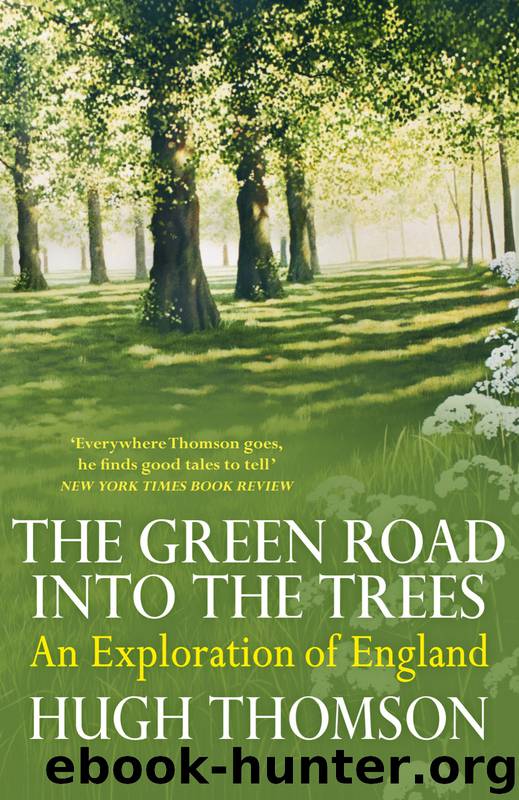The Green Road Into the Trees by Hugh Thomson

Author:Hugh Thomson
Language: eng
Format: epub
ISBN: 9781409051909
Publisher: Random House
To understand the Anglo-Saxons I needed to understand their obsessions. Studying village settlement patterns is all very well, but how much would you know of twenty-first-century man from council tax registers? Better to spend five minutes playing an Xbox.
The Anglo-Saxons were obsessed with hawking. As one academic put it, ‘In modern sociological terms falconry was an almost perfect example of conspicuous consumption: it was expensive, time-consuming, and useless.’ No wonder that by the eleventh century and the end of the Anglo-Saxon occupation, it had become an essential part of any noble’s education.
At the battle of Maldon in 991, great play is made of the fact that a follower of the Anglo-Saxon leader Earl Byrhtnoth lets his beloved hawk fly from his hand to the wood before facing the Viking hordes:
Loosed he from his hands his darling to fly,
His hawk to the wood, and to the battle strode.
From that one could tell that the chieftain would never Weaken in the warfare.
(The Battle of Maldon, translated by Wilfrid Berridge)
Earl Byrhtnoth has already asked his warriors to send their horses far off from the battle; the equivalent of Cortes’s later actions in Mexico when he broke up the boats in which the conquistadores had landed. But a horse is easily reclaimed. Not so a hawk. To free your hawk was a symbol of total commitment to both your cause and most likely death, the fate that awaited Earl Byrhtnoth himself.
As a romantic and desperate gesture, it could not have come at a more significant battle. For Maldon signalled the beginning of the end for the Anglo-Saxons. By 991, there had been no Viking raids for well-nigh a century, since the time of Alfred the Great. The young Ethelred the Unready was on the throne. Earl Byrhtnoth was his most senior noble, a tall man in his sixties who commanded respect. So when a large Viking fleet appeared off the coast of Suffolk in the summer of that year, and sacked Ipswich, he was the man sent to confront them when they reached Essex, his own dominions. He stood on the shoreline and told the arrogant Viking messenger who was demanding payment that ‘This was Ethelred’s land.’ Or, to use a phrase that was only just becoming current, ‘Englalond’.
The Battle of Maldon, the poem that commemorates the battle – or what is left of it, as the manuscript was partially burned – is as moving an English war poem as any written before the First World War, and an elegy for the turning of tides and of a civilisation. In the poem, ravens circle overhead waiting for the carrion corpses to present themselves. The young chieftain will never reclaim his hawk.
The raids that followed on for the half-century after Maldon created the turmoil that led to the Norman invasion of 1066. At Maldon, the Anglo-Saxon ‘shield-wall’ collapsed against the Vikings, just as it was later to collapse at the battle of Hastings to those Viking cousins, the Normans.
There were Anglo-Saxon hunting lodges all over
Download
This site does not store any files on its server. We only index and link to content provided by other sites. Please contact the content providers to delete copyright contents if any and email us, we'll remove relevant links or contents immediately.
Sapiens: A Brief History of Humankind by Yuval Noah Harari(14252)
The Tidewater Tales by John Barth(12608)
Mastermind: How to Think Like Sherlock Holmes by Maria Konnikova(7227)
Do No Harm Stories of Life, Death and Brain Surgery by Henry Marsh(6891)
The Thirst by Nesbo Jo(6828)
Why We Sleep: Unlocking the Power of Sleep and Dreams by Matthew Walker(6618)
Life 3.0: Being Human in the Age of Artificial Intelligence by Tegmark Max(5474)
Sapiens by Yuval Noah Harari(5294)
The Longevity Diet by Valter Longo(5019)
The Body: A Guide for Occupants by Bill Bryson(4974)
The Rules Do Not Apply by Ariel Levy(4861)
The Immortal Life of Henrietta Lacks by Rebecca Skloot(4525)
Animal Frequency by Melissa Alvarez(4395)
Why We Sleep by Matthew Walker(4360)
The Hacking of the American Mind by Robert H. Lustig(4318)
Yoga Anatomy by Kaminoff Leslie(4306)
All Creatures Great and Small by James Herriot(4232)
Double Down (Diary of a Wimpy Kid Book 11) by Jeff Kinney(4207)
Barron's AP Biology by Goldberg M.S. Deborah T(4097)
